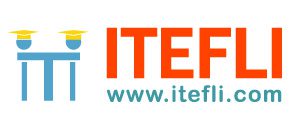Audio-Lingual Method
The Audio-Lingual Method (Audio-Lingualism) is based on the behaviourist belief that language learning is the acquisition of a set of correct language habits. The learner repeats patterns until able to produce them spontaneously. Once a given pattern – for example, subject-verb-prepositional phrase – is learned, the speaker can substitute words to make novel sentences. The teacher directs and controls students’ behaviour, providing a model, and reinforcing correct responses.
Aims: To use language for self-expression; to develop independence from the teacher, to develop inner criteria for correctness.
Roles: Teaching should be subordinated to learning. Teachers should give students only what they absolutely need to promote their learning. Learners are responsible for their own learning.
Teaching/Learning Process: Students begin with sounds, introduced through the association of sounds in the native language to a sound-colour chart. The teacher then sets up situations, often using Cuisenaire rods, to focus students’ attention on structures. Students interact as the situation requires. Teachers see students’ errors as clues to where the target language is unclear, and they adjust instruction accordingly. With the audio-lingual method, students are urged to take responsibility for their learning. Additional learning is thought to take place during sleep.
Interaction: Student-teacher & Student-student
The teacher is silent much of the time, but very active in setting up situations, listening to students, speaking only to give clues, not to model speech. Student-student interaction is encouraged.
Dealing with Feelings: Teachers monitor students’ feelings and actively try to prevent their feelings from interfering with their learning. Students express their feelings during feedback sessions after class.
View of Language, Culture: Language and culture are inseparable, and each language is seen to be unique despite structural similarities with other languages.
Aspects of Language the Approach Emphasises: All four skill areas worked on from beginning (reading, writing, speaking, listening); pronunciation especially because sounds are basic and carry the melody of the language. Structural patterns are practised in meaningful interactions. The syllabus develops according to learning abilities and needs. Reading and writing exercises reinforce oral learning.
Role of Students’ Native Language: Although translation is not used at all, the native language is considered a resource because of the overlap that is bound to exist between the two languages. The teacher should take into account what the students already know.
Means for Evaluation: Assessment is continual, but only to determine continually changing learning needs. Teachers observe students’ ability to transfer what they have learned to new contexts. To encourage the development of inner criteria, neither praise nor criticism is offered. Students are expected to learn at different rates, and to make progress, not necessarily speaking perfectly in the beginning.
Response to Students’Errors: Errors are inevitable, a natural, indispensable part of learning.

